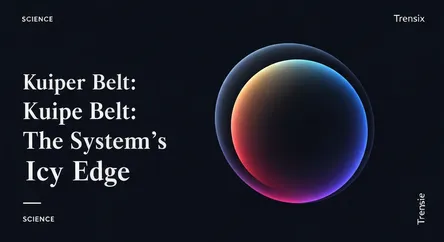Science
Kuiper Belt: The Solar System's Icy Edge

Discover the Kuiper Belt, a vast, icy region beyond Neptune filled with dwarf planets and ancient remnants from the Solar System's formation.
What is it?
The Kuiper Belt is a massive, donut-shaped ring of icy bodies circling the sun beyond the orbit of Neptune. Often called the Solar System's "third zone," it's vastly larger than the asteroid belt. This frigid expanse is populated by hundreds of thousands of icy objects and is home to dwarf planets, including Pluto. These objects are considered primordial remnants from the formation of our solar system, preserved in a deep freeze for billions of years, offering a window into our cosmic past.
Why is it trending?
The Kuiper Belt remains a hot topic thanks to groundbreaking space missions, particularly NASA's New Horizons. After its historic flyby of Pluto, the spacecraft encountered Arrokoth, providing the first close-up look at a pristine Kuiper Belt Object (KBO). These encounters reveal secrets about how planetesimals—the building blocks of planets—are formed. Ongoing analysis of this data and new discoveries by powerful telescopes like the James Webb Space Telescope continue to fuel scientific interest and challenge existing models of planetary evolution.
How does it affect people?
While remote, the Kuiper Belt's study impacts our understanding of our cosmic origins. Its icy bodies are like fossils, holding clues to the early Solar System. The belt is also a source of short-period comets, and studying their orbits helps scientists enhance planetary defense strategies against potential impact threats. Ultimately, exploring this region helps answer fundamental questions about how our planetary neighborhood was assembled, connecting us to the grand history of the cosmos.